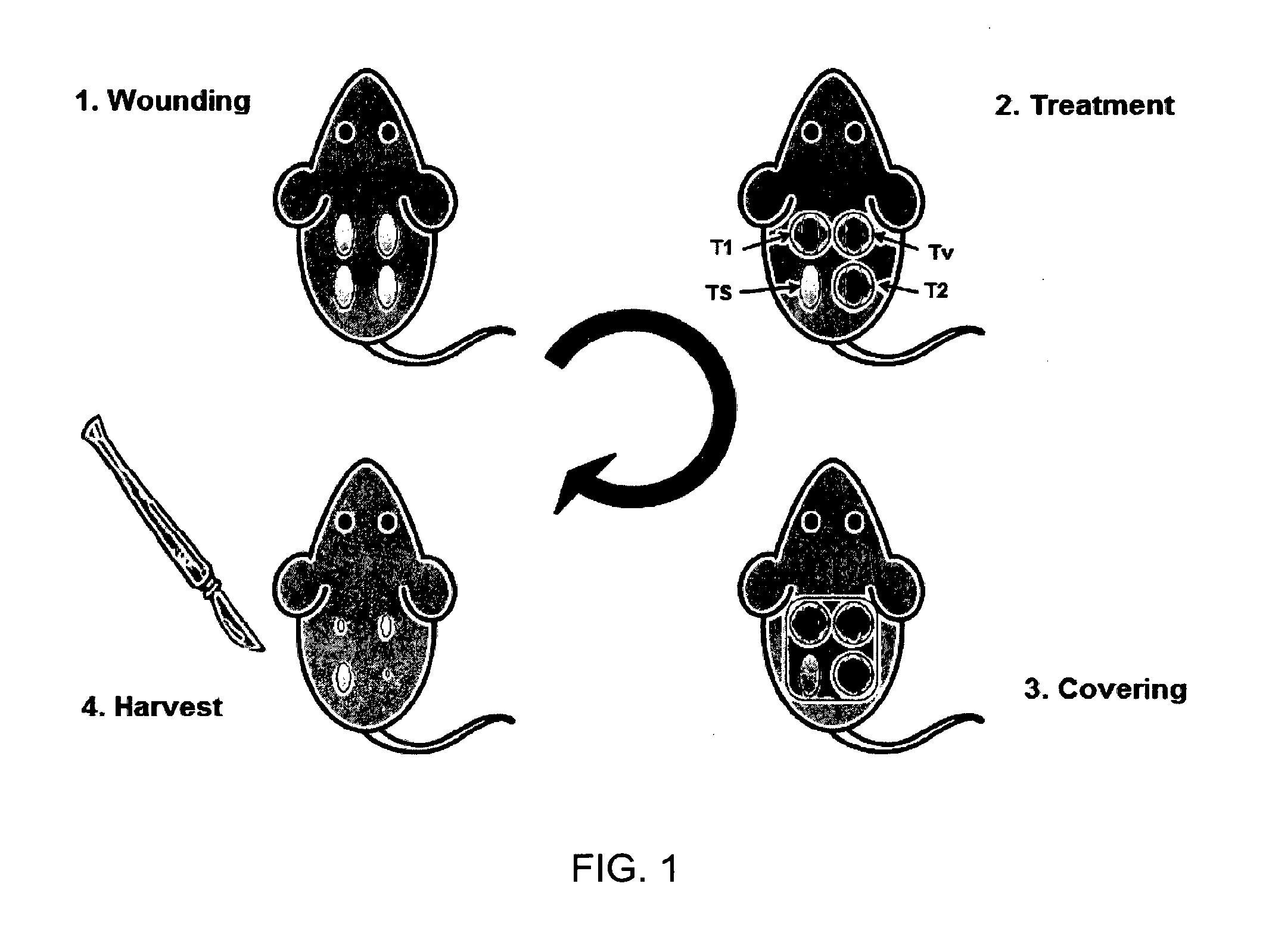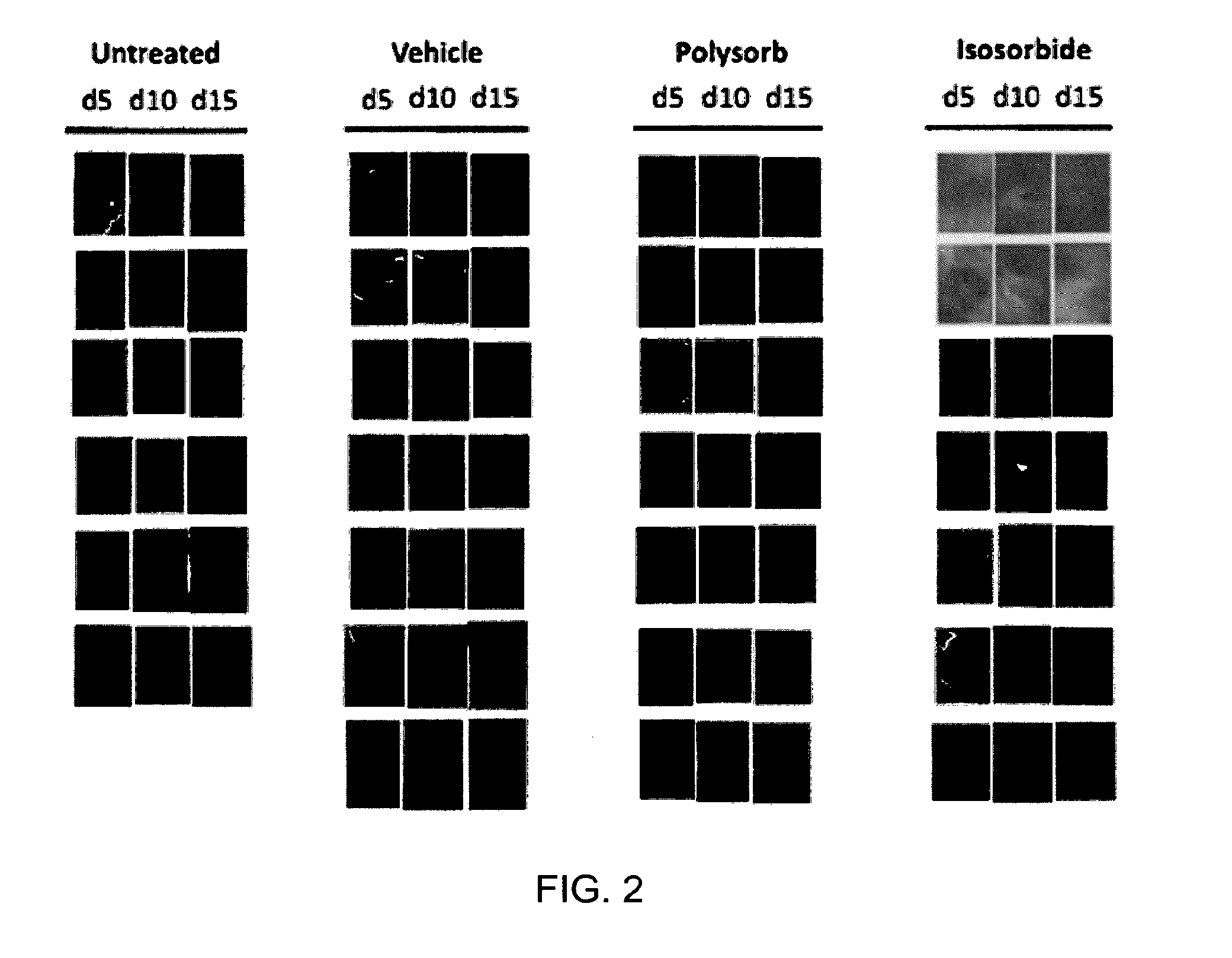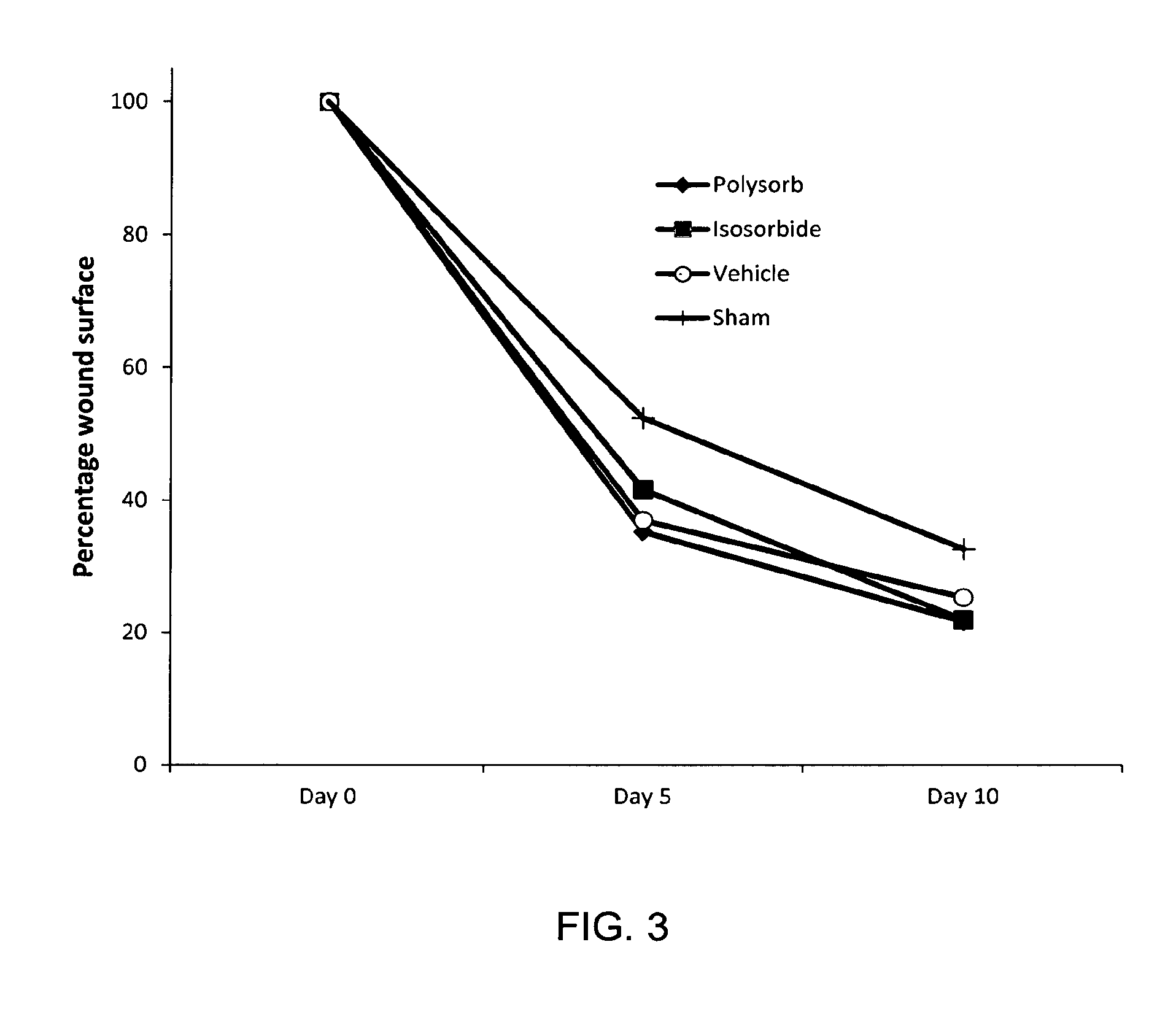Compounds and formulations for the treatment of wounds
a technology for wounds and compounds, applied in the field of wound treatment, can solve the problems of not being able to reduce scarring, promote normal tissue regeneration, promote normal tissue/skin structure, etc., and achieve the effect of reducing scarring
- Summary
- Abstract
- Description
- Claims
- Application Information
AI Technical Summary
Benefits of technology
Problems solved by technology
Method used
Image
Examples
Embodiment Construction
5.1 Definitions
[0045]A “wound” as used in the present invention is to be understood as a disruption of tissue integrity. For instance, wounds may comprise minor cuts or abrasions; complicated / full thickness wounds; traumatic wounds such as e.g. abrasions, lacerations; surgical wounds; post-surgical incisions; or chronic / non-healing wounds like pressure sores; diabetic ulcers; injuries to connective tissue like bone or cartilage; burn injuries; and scars (e.g. keloid scars, contracture scars, hypertrophic scars and acne scars). The wound may be an open wound or a closed wound. A ‘closed’ wound in the sense of the present invention means a wound that was open at one point (e.g. a surgical incision or an accidental cut) and that has been purposefully closed by means of a suture, staple, tape, surgical adhesive and the like.
[0046]A “scar” in the sense of the present invention means normal scars, hypertrophic scars, keloid scars, contracture scars, atrophic scars and striae. Symptoms of ...
PUM
| Property | Measurement | Unit |
|---|---|---|
| Time | aaaaa | aaaaa |
| Structure | aaaaa | aaaaa |
Abstract
Description
Claims
Application Information
 Login to View More
Login to View More - R&D
- Intellectual Property
- Life Sciences
- Materials
- Tech Scout
- Unparalleled Data Quality
- Higher Quality Content
- 60% Fewer Hallucinations
Browse by: Latest US Patents, China's latest patents, Technical Efficacy Thesaurus, Application Domain, Technology Topic, Popular Technical Reports.
© 2025 PatSnap. All rights reserved.Legal|Privacy policy|Modern Slavery Act Transparency Statement|Sitemap|About US| Contact US: help@patsnap.com



